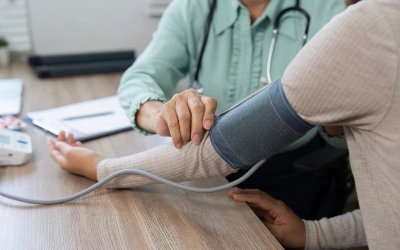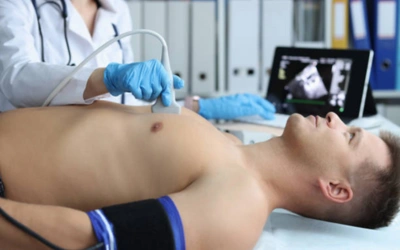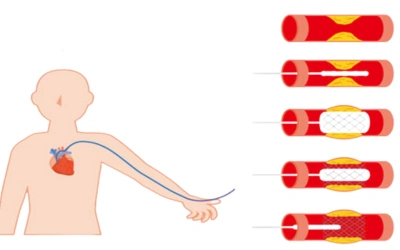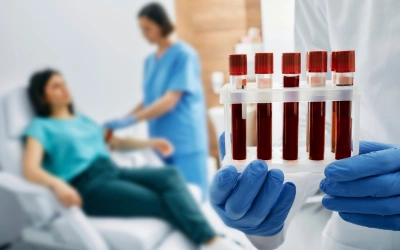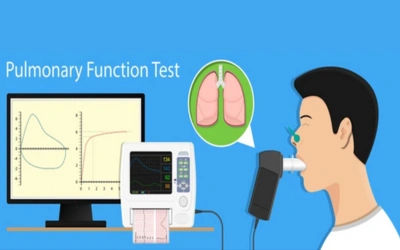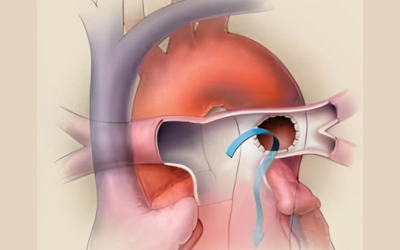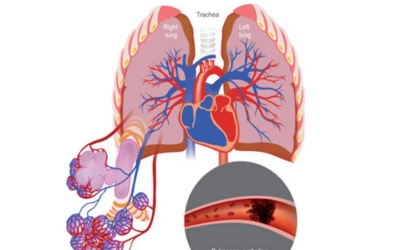
Interventional Treatment for Pulmonary Hypertension in Mumbai, India
Struggling with shortness of breath, fatigue, or swelling in the legs? These could be signs of pulmonary hypertension (PH)—a condition where the blood pressure in the lungs’ arteries is too high. Over time, this can strain the heart and lead to severe complications like heart failure. Fortunately, interventional treatment for pulmonary hypertension can help manage symptoms, reduce risks, and improve quality of life.
“Interventions like catheter-based procedures and targeted therapies have revolutionized PH care, giving patients better long-term outcomes,” says Dr. Prashant Bobhate, a noted pediatric cardiologist in Mumbai. “Minimally invasive PH treatments are making a huge difference, particularly for those with chronic or advanced conditions.”
Dr. Bobhate has over 12 years of expertise in both pediatric and adult PH management. At Kokilaben Dhirubhai Ambani Hospital, he offers comprehensive interventional treatment for pulmonary hypertension in Mumbai, India, using state-of-the-art diagnostic tools and minimally invasive procedures to treat PH effectively. His patient-centered approach ensures each treatment plan is tailored to the individual needs of the patient, leading to better outcomes and improved health.
As Dr. Prashant Bobhate, a leading Pediatric Cardiologist in Mumbai, India, explains:
“Heart conditions in children are not always visible at birth, but early detection can be life-saving. A child’s heart health influences everything—from growth and development to learning and energy levels. Timely diagnosis and treatment ensure a healthier, more active childhood.”
Contact Us
Curious how PH is diagnosed accurately? Let’s discuss the diagnostic steps that lead to effective treatment.
Diagnostic Approach to Pulmonary Hypertension
Comprehensive Clinical Evaluation
Dr. Bobhate begins by reviewing your medical history and symptoms. If you have a known condition, such as congenital heart disease or lung disease, this helps focus the diagnostic process.
Echocardiography (2D Echo)
Non-invasive ultrasound helps visualize heart structure, assess heart function, and measure pressure in the pulmonary arteries. This is usually the first line of diagnostics.
Right Heart Catheterization
This test involves the direct measurement of pulmonary artery pressure and is thus a major diagnostic step in confirming PH. It’s often done when other tests reveal high pressures.
Blood Tests for Underlying Conditions
Dr. Bobhate uses blood tests to screen for conditions such as autoimmune diseases, chronic infections, and clotting disorders that can contribute to PH.
Lung Function Tests
Pulmonary function tests assess how well the lungs are working. These tests can identify if lung disease is contributing to the PH and guide treatment decisions.
Wondering how PH is treated beyond medications? Let’s explore the interventions that provide life-changing relief.
Advanced Interventional Treatment Options for Pulmonary Hypertension
Transcatheter Potts Shunt
In selected cases of PH due to congenital heart defects, Dr. Bobhate does a transcatheter Potts shunt-a very specialized technique in which a shunt is created between the aorta and pulmonary artery to help alleviate right ventricular pressure. It is often considered when medical therapy is no longer effective.
Atrial Septostomy / Atrial Flow Regulator (AFR)
This procedure creates a small opening between the upper chambers of the heart to decompress the right side. By improving blood flow and stabilizing oxygen levels, it helps relieve symptoms in advanced PAH. The use of an Atrial Flow Regulator device provides a controlled and safe opening to optimize blood flow.
Pulmonary Artery Denervation (PADN)
This catheter-based minimally invasive procedure targets the nerves around the pulmonary artery that contribute to high vascular resistance. By interrupting these nerve signals, the pulmonary artery pressure reduces, helping improve exercise tolerance and heart function.
Balloon Pulmonary Angioplasty (BPA)
It is a minimally invasive intervention for dilating narrowed pulmonary arteries. This procedure is recommended only for patients suffering from a specific type of PH called chronic thromboembolic pulmonary hypertension (CTEPH) who are not operable or have residual lesions post-surgery. Dr. Bobhate uses the most advanced techniques to improve blood flow and reduce strain on the heart.
Concerned about the costs of PH treatments? Understanding the expenses involved can help you plan and access the right care.
Cost of Interventional Pulmonary Hypertension Treatment in Mumbai

The cost of interventional treatment for pulmonary hypertension in Mumbai would depend on the severity of the disease, the treatments required, and the infrastructure at the hospital. Further, procedures such as balloon pulmonary angioplasty or catheter-based Potts shunt interventions involve more specialisation and are hence more costly, considering the complexity.
The prices for prostacyclin and endothelin receptor antagonists will vary depending on the medication and dosage needed for ongoing therapy. Besides these, regular follow-up consultations and diagnostic tests, such as echocardiograms and lung function tests, will further add up to the cost of treatment.
Kokilaben Dhirubhai Ambani Hospital offers comprehensive PH management with transparency regarding treatment costs. The financial coordinator of the hospital could also be consulted regarding the possibility of insurance coverage or government aid for the treatment.

Looking for the right expert for PH treatment? Here’s why so many trust Dr. Bobhate to manage pulmonary hypertension.
Why Choose Dr. Prashant Bobhate for Interventional Treatment of Pulmonary Hypertension?

12+ Years of Experience in PH Management
Dr. Bobhate has treated hundreds of pediatric and adult patients with PH using the latest interventional techniques to improve outcomes.
Experience in both pediatric and adult PH
Having treated PH in both adults and children, Dr. Bobhate brings vast knowledge and experience to the care of all ages.
Minimally Invasive Treatment Focus
He prioritizes non-surgical, minimally invasive pulmonary hypertension procedures that minimize recovery time and improve patient comfort and results.

Multidisciplinary Approach to Care
Dr. Bobhate works as part of a multidisciplinary team with pulmonologists, cardiologists, and intensivists to offer comprehensive and integrated care.
Advanced Diagnostic and Monitoring Techniques
He uses the latest imaging technologies, including echocardiography, right heart catheterization, and lung function tests, to accurately diagnose and plan effective treatment.
Comprehensive Follow-Up Care
Dr. Bobhate ensures that every patient receives personalized follow-up care, including monitoring of pulmonary pressures, heart function, and medication management.
Frequently Asked Questions
1. What causes pulmonary hypertension?
It can be caused by heart defects, lung diseases, blood clots, or genetic factors, among others.
2. Can pulmonary hypertension affect other organs?
Yes, PH can affect the heart, lungs, liver, and kidneys due to the increased pressure in the blood vessels.
3. Is exercise safe for people with pulmonary hypertension?
Exercise should be tailored to each patient’s condition, and low-impact activities are often encouraged to improve overall health.
4. Is PH hereditary?
Some forms of PH, especially pulmonary arterial hypertension, can be hereditary, but many cases are acquired due to other conditions.
5. What is the difference between primary and secondary pulmonary hypertension?
Primary PH occurs without a known cause, while secondary PH results from conditions such as heart or lung disease.
Disclaimer: The information shared in this content is for educational purposes and not for promotional use.

